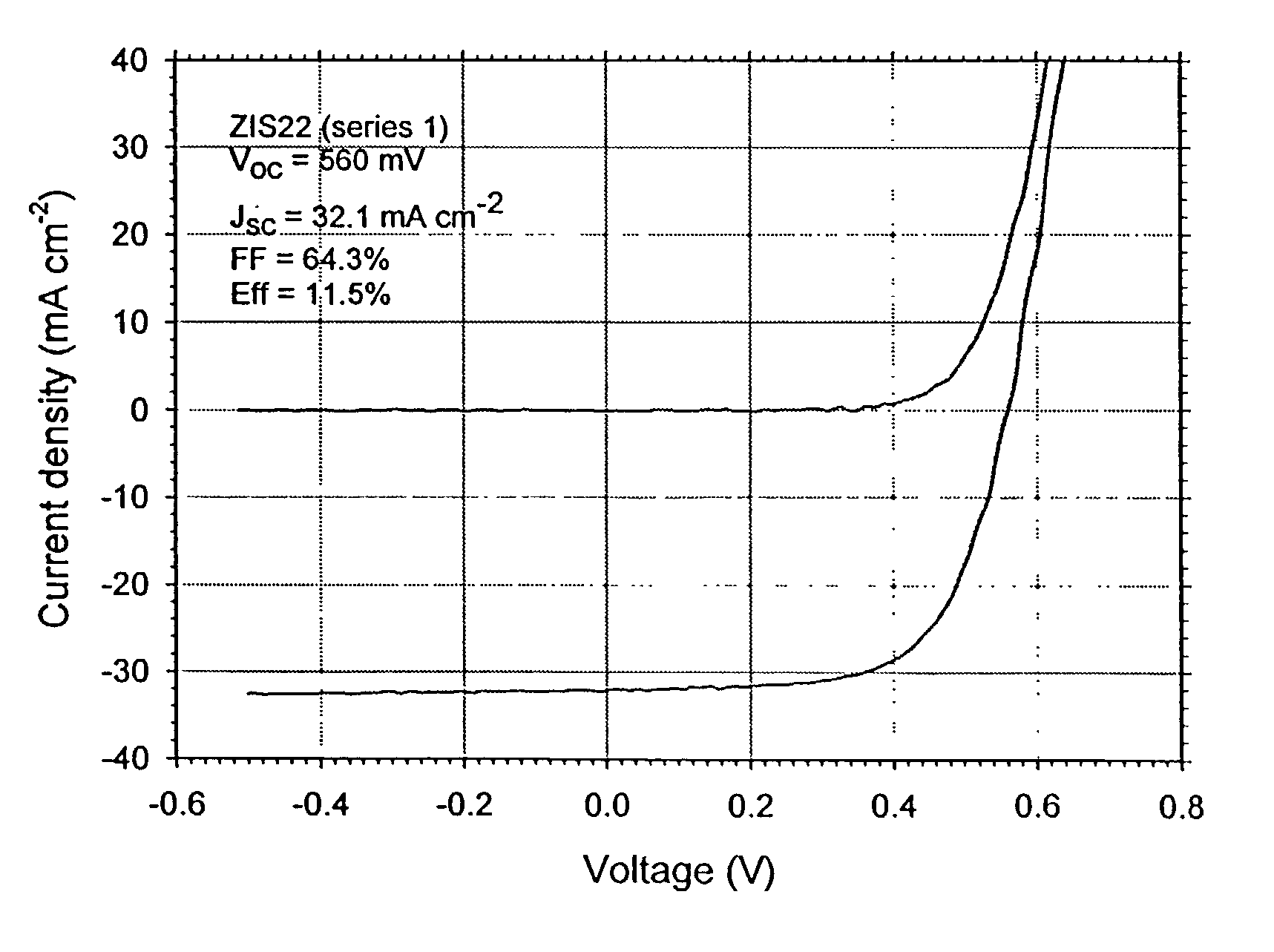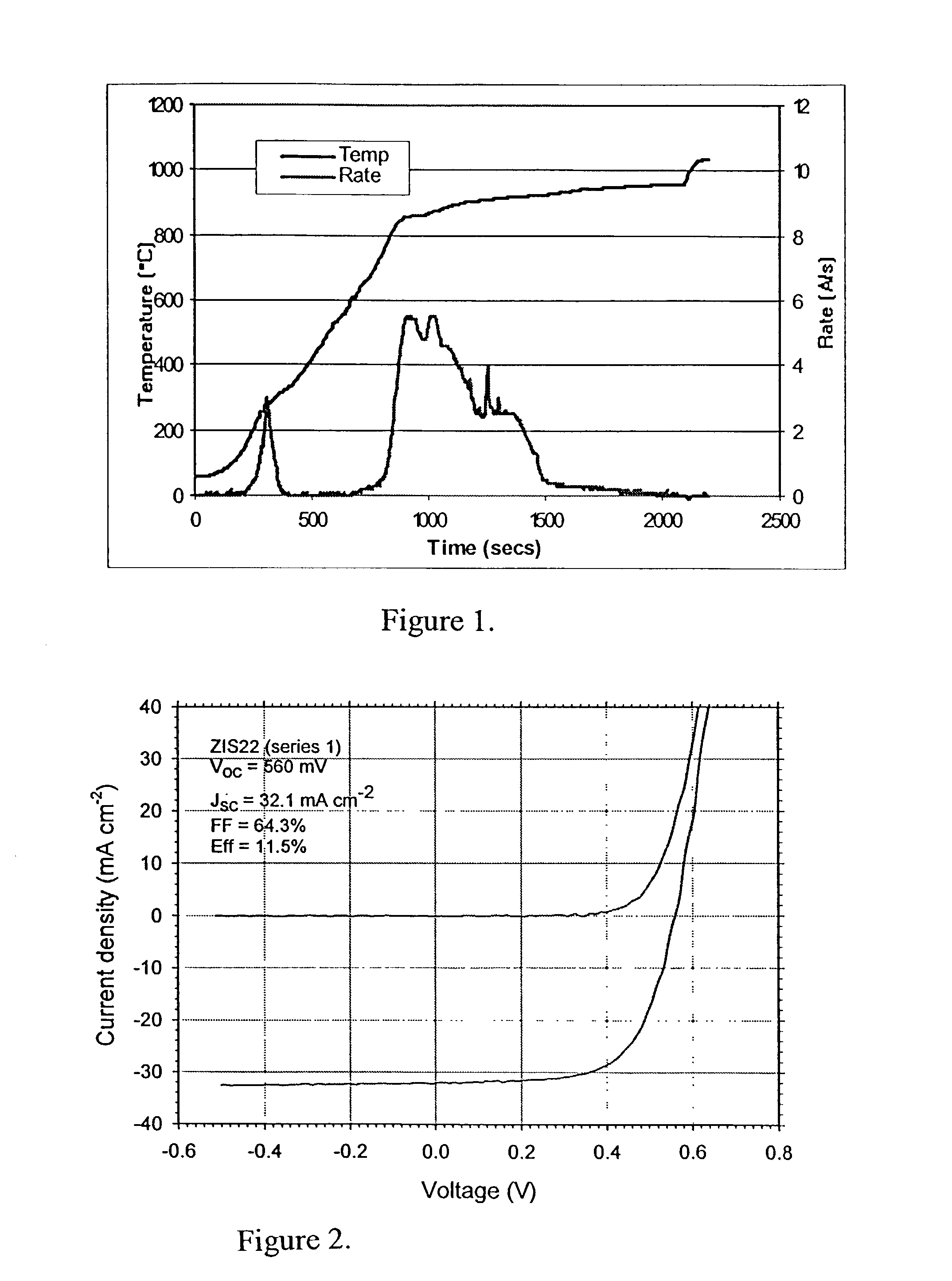Method of junction formation for CIGS photovoltaic devices
a photovoltaic device and junction formation technology, applied in the field of photovoltaic devices, can solve the problems of high cost factor, difficult deposition control, poor quality of solar cells made of cu-rich films, etc., and achieve the effect of simplifying the hardware and simplifying the deposition control
- Summary
- Abstract
- Description
- Claims
- Application Information
AI Technical Summary
Benefits of technology
Problems solved by technology
Method used
Image
Examples
example
[0057]This example describes the fabrication of the solar cell reported in run 51 of Table 1. The starting sample consists of a piece of glass bearing a sputtered Mo back contact and a film of CIGS of about 2.5 μm in thickness. The sample was rinsed in de-ionized water for one minute, dried in a stream of nitrogen, and mounted in a vacuum evaporator. The source crucible was made of graphite. 10 mg of ZnIn2Se4 (ZIS) was placed in the crucible, together with 19 mg of sulfur. The system was pumped to a pressure of 1.2×10−6 Torr using a diffusion pump, and the substrate was heated to 185° C. The crucible was heated using a resistive heater causing the evaporation of the sulfur followed by the ZIS. The sample was cooled to about 50° C. before removing it from the chamber. A single layer of transparent and conductive ZnO:Al was sputtered for 9 minutes onto the ZIS. The sample was removed from the sputtering chamber and devices were defined by mechanical scribing. The devices (solar cells)...
PUM
 Login to View More
Login to View More Abstract
Description
Claims
Application Information
 Login to View More
Login to View More - R&D
- Intellectual Property
- Life Sciences
- Materials
- Tech Scout
- Unparalleled Data Quality
- Higher Quality Content
- 60% Fewer Hallucinations
Browse by: Latest US Patents, China's latest patents, Technical Efficacy Thesaurus, Application Domain, Technology Topic, Popular Technical Reports.
© 2025 PatSnap. All rights reserved.Legal|Privacy policy|Modern Slavery Act Transparency Statement|Sitemap|About US| Contact US: help@patsnap.com



